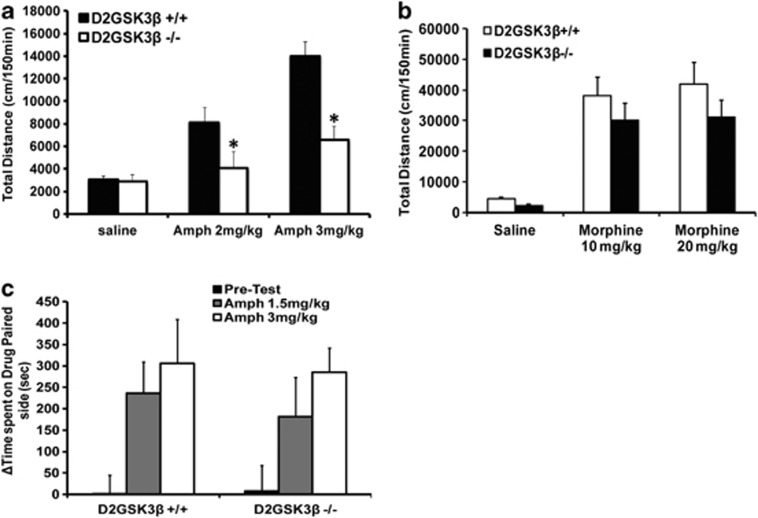Figure 2.
Role of β-arrestin-dependent GSK3β pathway in D2R neurons in locomotion and CPP. Mice with deletion of GSK3β in D2R neurons (D2GSK3β−/−) and controls (D2GSK3β+/+) were placed in an activity monitor and the distance was recorded every 5 min for 30 min, and then they were injected with (a) amphetamine (Amph, 2 or 3 mg kg−1, intraperitoneal) or (b) morphine (10 or 20 mg kg−1, subcutaneous) and the distance was recorded every 5 min for 120 min. D2GSK3β−/− mice show significantly less cumulative distance traveled (150 min) than D2GSK3β+/+ mice upon (a) amphetamine (both doses) but not (b) morphine treatment. n=8 for all genotype and treatment groups, *P<0.05, comparing D2GSK3β−/− and D2GSK3β+/+ Amph-treated groups. (c) D2GSK3β−/− mice spend similar amount of time in the Amph-paired chamber as the D2GSK3β+/+ mice at both doses tested. n=10 mice per genotype per group.

